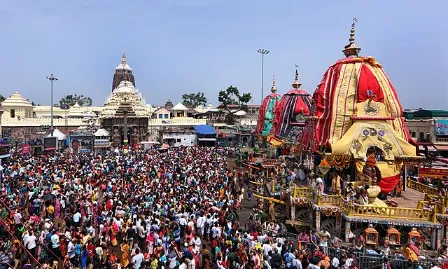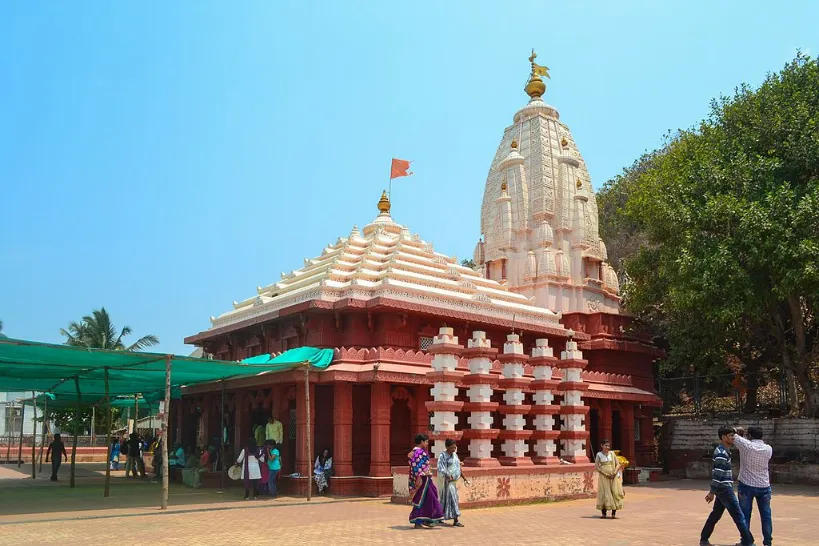As the sun rose on a momentous morning, I found myself in the bustling streets of Puri, Odisha, having pre-booked a Savaari for this special occasion. With my chauffeur skillfully navigating the crowded lanes, I was escorted to a prime vantage point. The air was electric with infectious excitement. Devotees from all walks of life eagerly awaited the grand event. A wave of anticipation washed over me, mingling with the palpable devotion that permeated the atmosphere. The day had finally arrived—it was Rath Yatra, the magnificent festival of chariots.
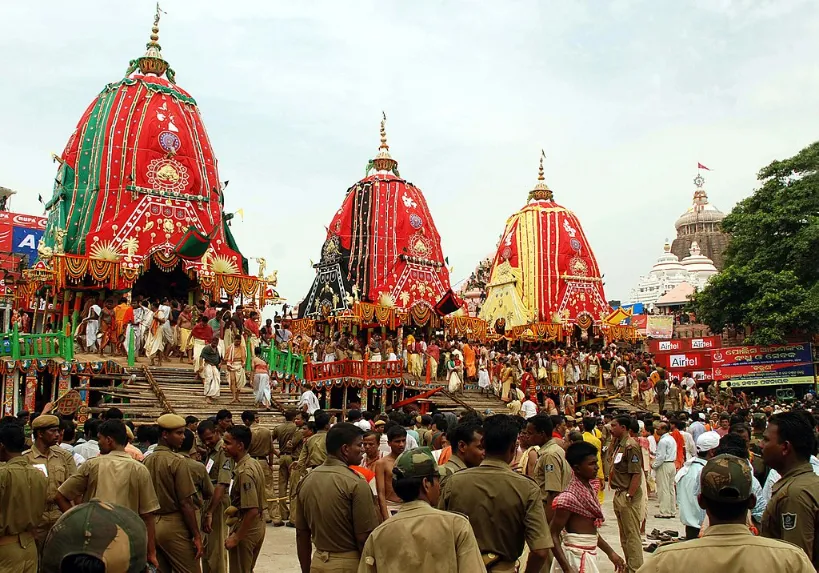
My eyes were drawn to the immense chariot, a colossal structure adorned with ornate carvings and intricate designs. Towering over the bustling crowd, it stood as a testament to devotion and tradition. The chariot’s wheels, seemingly as tall as buildings, were a marvel in themselves, crafted with meticulous detail. The scent of fresh flowers and incense wafted through the air. It mingled with the sound of drumbeats and the chanting of “Jai Jagannath Haribola”. People from all walks of life had gathered, their faces illuminated with radiant smiles and their hearts brimming with love.
With each synchronized pull, the chariot inched forward, surging ahead with an indomitable spirit. The spectacle was a visual feast, a symphony of colours, sounds, and emotions. In all my years, I had never witnessed such an awe-inspiring and captivating experience. Let’s delve into the depths of the Rath Yatra, exploring its rich history, significance, and the profound impact it continues to have on the lives of countless devotees.
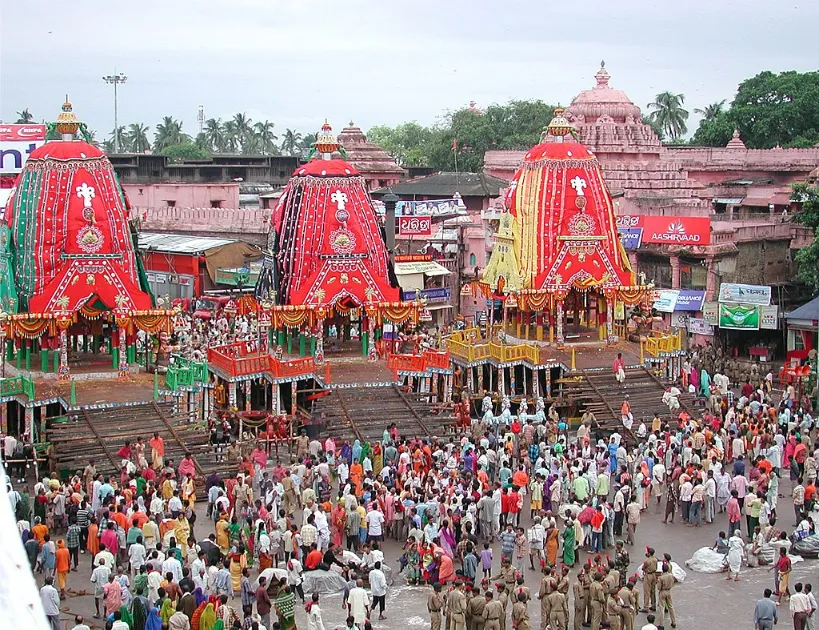
Rath Yatra – Celebrating the divine journey of Lord Jagannath
Rath Yatra, also known as Navadina Yatra, Dasavatara Yatra, and Gundicha Yatra. It is an exquisite annual festival that pays homage to Lord Krishna, also known as Lord Jagannath. Held on the second day of Shukla Paksha, according to the traditional Oriya calendar, this vibrant celebration holds immense significance in Hinduism. The Jagannath Temple in Puri, Odisha, orchestrates this grand event, attracting thousands of devotees from far and wide.
The event involves the transportation of the idols of Lord Krishna, Lord Balabhadra, and Subhadra from the Jagannath Temple to the Gundicha Temple, where they are placed in chariots. Before the procession, the priests perform the Snana Purnima ritual, in which the three idols are washed with water using 108 buckets. The idols then remain isolated until the day of the parade, known as Ansara. During the Chera Pahara ceremony, the royal successor of Odisha participates in the ritual of personally transporting the deities and placing them on the chariots. With its core values of fraternity, peace, and harmony, Puri’s Rath Yatra is a magnificent spectacle that bestows blessings and abundance upon all who participate.
The divine journey – Tracing the origins of Puri Rath Yatra
Immersed in the vibrant tapestry of local culture, I unveiled the mystical tales that lie at the very heart of Rath Yatra, beautifully reflecting the profound socio-religious beliefs cherished by the people of the region.
The legend of the ceremonial sojourn of siblings
Nestled within the sacred Hindu texts—Brahma Purana, Padma Purana, Skanda Purana, and Kapila Samhita—resides the belief that it was Subhadra, the cherished sister of Lord Jagannath, who yearned to journey to the sacred city of Puri. In response to her fervent desire, Lord Jagannath, accompanied by his elder brother Lord Balabhadra, embarked on a divine chariot, graciously granting Subhadra’s wish. From that moment onward, the festival has been etched into the fabric of time as an annual ceremonial sojourn of Lord Jagannath, along with his revered siblings, brother Balabhadra and younger sister Subhadra, from their abode temple to what is considered their aunt’s sacred sanctuary.
The story of Kansa’s invitation
Another enchanting narrative whispers in the air, evoking the tale of Kansa, the maternal uncle of Lord Krishna and Balram. Driven by malevolence, he cunningly invited them to Mathura and dispatched Akrur with a resplendent chariot to Gokul. Obediently, Lord Krishna and Balram took their seats upon the chariot, setting forth on their fateful journey to Mathura. Thus, the day of their departure became a cherished celebration known as Rath Yatra, a testament to devotion and divine protection. In the euphoric realms of celebration, devotees honour the day when Lord Krishna, after vanquishing the wicked Kansa, graced the city of Mathura, bestowing upon his devotees the divine vision of his form in a majestic chariot alongside his beloved brother, Balaram.
The tale of Narad’s prayer and the siblings’ eternal residency
Legend whispers that as Lord Krishna’s queens sought to hear the enchanting tales of his amorous exploits with the Gopis, Mother Rohini deemed it inappropriate for Subhadra to listen and sent her away. However, fate had other plans, as Subhadra, drawn to the enthralling tales, was absorbed into the vortex of the enchanting stories. Moments later, Narad, the celestial sage, encountered the motionless trio and offered a prayer, “May the three of you grant eternal darshan in this enchanting form.” Miraculously, their prayer was granted, and the divine siblings have since resided eternally within the sacred confines of the Jagannath Puri Temple.
Amongst the sacred temples gracing the cardinal directions of India, the Jagannath Puri Temple stands resolute. It is one of the four most hallowed abodes. These include Rameshwar in the South, Dwarka in the West, and Badrinath nestled amidst the Himalayas. Remarkably, the temple in Jagannath Puri stands unparalleled. Within its sanctum dwell three divine deities—Lord Krishna, Balaram, and Subhadra. They are united not only by their divine nature but also by the unbreakable bond of siblinghood.
Sacred ceremonies – Exploring the rituals of Rath Yatra
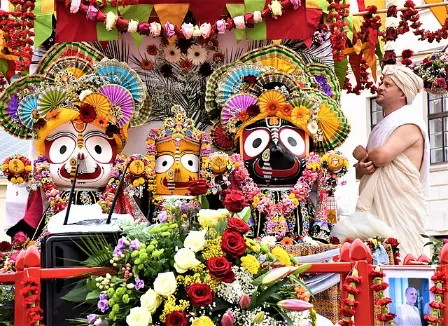
Immersed in the vibrant tapestry of rituals, I witnessed the true essence of Rath Yatra. The beauty of the festival unfolded through each meticulously woven ceremony. These sacred rituals were a testament to unwavering devotion and tireless dedication. They breathed life into the grandeur of the event, capturing the hearts and minds of all who partook.
Chandana Yatra – A festival of sandalwood and building chariots
Arriving 18 days before the Rath Yatra, I had the privilege to witness the tireless efforts of the craftsmen. Meticulously, they crafted three colossal wooden chariots for the revered deities. The construction of the chariots starts on Akshaya Tritiya, the third day of the bright fortnight of Vaisakha, with ritual fire worship. Moreover, this day marks the beginning of the summer festival of the deities. It is also known as the sandalwood festival or Chandan Yatra, lasting for three weeks.
The construction of these magnificent chariots uses Neem tree wood, symbolizing the sacredness and purity of the occasion. The dedication and hard work of the people involved were truly remarkable, reflecting their devotion to the divine. As I immersed myself in the preparations, I discovered an intriguing tradition associated with the chariots. Once the Rath Yatra concludes, the organizers deconstruct the chariots and utilize the wood as firewood in the temple kitchen. They transform this wood, which is imbued with the divine presence of the deities, into prasad, a blessed offering distributed to the devotees. It is a beautiful cycle of devotion and nourishment, where the chariots continue to serve in a different form.
Snana Yatra – The spiritual cleansing of the deities
However, the grandeur of the Rath Yatra extends beyond the majestic chariots themselves. It encompasses a series of sacred rituals that commence well in advance. Among them, I had the incredible opportunity to witness the revered Snana Yatra, a significant event in which Lord Jagannath, Balabhadra, and Devi Subhadra receive a famous ceremonial bath.
With anticipation, I observed the Pahandi procession, where the deities were lovingly carried from the sanctum sanctorum to the bathing altar. The atmosphere was filled with profound devotion, as every detail was carefully attended to. I stood in awe as 108 pitchers, brimming with herbal and aromatic water meticulously chosen for its purity, were poured over the deities. The air was filled with the sacred aroma, permeating every corner and creating an ambience of sanctity and spirituality.
The ceremonial bath used water drawn from the suna kua, the golden well, adding significance to the occasion. Water cascaded over the divine forms of Lord Jagannath, Balabhadra, and Devi Subhadra. A profound sense of divine purity enveloped them, cleansing and revitalizing their sacred presence.
Rath Yatra – The divine journey
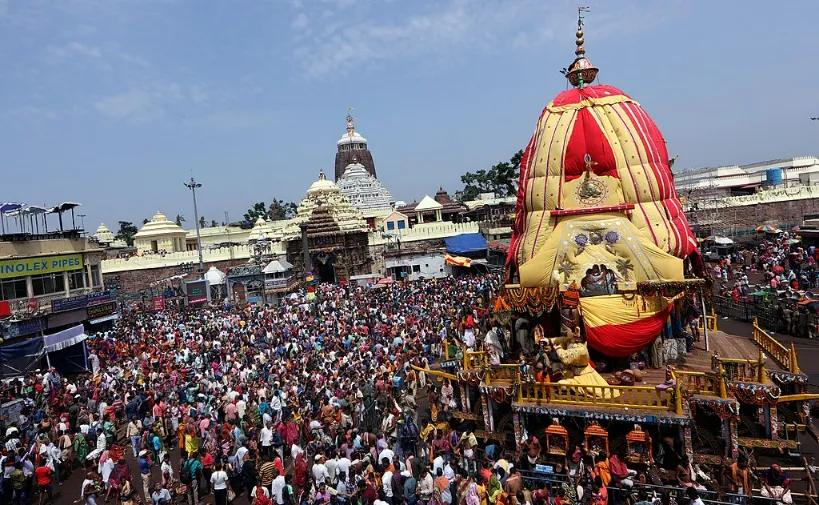
On the day of Rath Yatra, I woke up with the first rays of the sun, filled with anticipation. I felt a sense of purity as I prepared for the sacred day. Immersed in a purifying bath, I let the water cleanse my body and soul. With a heart brimming with devotion, I offered heartfelt prayers to the Lord in the sacred space of my home. I sought blessings for the journey ahead, eager to participate in this divine journey.
The morning unfolded as I made my way towards the revered Jagannath Temple. The air was filled with enchantment and reverence. Before me stood the colossal chariots in all their grandeur. They patiently awaited to carry the Lord in a magnificent procession. It was a sight that filled my heart with awe and reverence, a moment of profound connection with the divine.
Chera Pahara – When royalty adorns the chariots of the divine
Soon, the contemporary king, Maharaja Dibyasingha Deba, adorned in regal attire, arrived at the temple. With utmost grace and devotion, he gently lifted the deities from the sacred abode within the temple. He lovingly placed them upon their respective chariots. The multitude of devotees witnessed this ceremonial act, a grand spectacle that testified to the rich traditions passed down through generations.
In a display of humility and equality, the king’s noble offspring arrived on elegantly adorned elephants. The kings, whether it be the King of Puri or the King of Nepal, had the sole privilege of bringing forth the divine idols from the temple as they belonged to the illustrious Chandravanshi dynasty of Lord Krishna. They, with utmost reverence, took hold of a gold-handled broom and began sweeping the platforms of the Lord’s chariot. Each stroke of the broom symbolized the eradication of any distinctions of caste, colour, or creed, reaffirming the timeless truth that every human being is equal in the eyes of the divine.
In that sacred moment, I realized the profound significance of this ritual associated with Rath Yatra. It was a powerful reminder that in the eyes of God, every individual is equal and worthy, irrespective of societal labels. As I witnessed this extraordinary spectacle, I couldn’t help but feel the unity and inclusiveness that permeated the atmosphere. Rath Yatra transcended boundaries and touched the depths of the human spirit, reminding us of our innate connection to the divine. With a heart filled with gratitude, I joined my fellow devotees in offering heartfelt prayers, immersing myself in the divine journey that lay ahead.
Rath Yatra’s legacy – The birth of a word in the English language
During the procession, as I engaged in conversations with the locals, a fascinating revelation unfolded before me. It dawned upon me that a word etched in the annals of the Oxford Dictionary found its origin right here, within the realms of the Rath Yatra festival. I learned that the British, during their rule in India, were utterly captivated by the splendour and fervour of the Puri Rath Yatra. They were so mesmerized by the spectacle that they coined a term to encapsulate its grandeur – “Juggernaut.” This word, now a part of the English lexicon, alluded to a colossal vehicle possessing the power to crush anything in its path.
The term “Juggernaut” was derived from the heart of the Rath Yatra festival. It originated from the revered word “Jagannath,” meaning “The Lord of the World.” The festival embodies faith and devotion, celebrating Lord Jagannath. The linguistic bridge between cultures intrigued me. It showcased the interconnectedness of traditions and their enduring impact. The birth of the word “Juggernaut” in English, rooted in the Rath Yatra, is a testament to the universality and lasting influence of ancient customs.
How to plan a trip to Puri for Rath Yatra
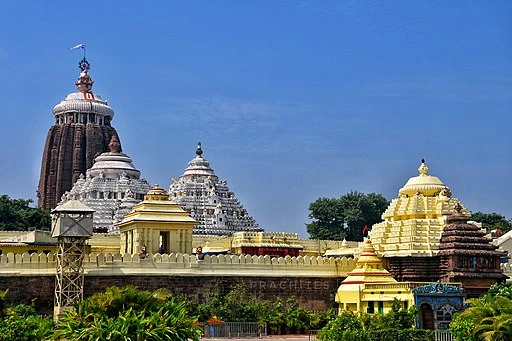
Embarking on a journey to witness the magnificence of the Rath Yatra is a thrilling adventure. The intricacies of dates and rituals can pose a delightful challenge. Here’s a step-by-step guide to help you plan your pilgrimage with grace. Ensure that you savor every sacred moment of this extraordinary celebration.
1. Determine the travel dates
The enchanting Rath Yatra festival in Puri traditionally unfolds during June or July. Its specific dates vary from year to year. In 2024, the divine spectacle of Puri Rath Yatra will grace the realm. It will take place on the auspicious day of the 7th of July. A highly recommended approach is to embark on the pilgrimage 18 days in advance. By doing so, you will bear witness to the wondrous preparations and timeless traditions that pave the way for the revered Rath Yatra day.
Here’s the schedule for Puri Rath Yatra 2024.
| Date | Event | Significance |
| Snana Purnima | 22nd June | On this day, the deities are ceremonially bathed with 108 pitchers of aromatic water, symbolizing purification and preparation for the Rath Yatra. |
| Rath Yatra | 7th July | The grand procession where the deities are carried on intricately designed chariots, signifies Lord Jagannath’s journey to visit His aunt’s temple. |
| Bahuda Yatra | 15th July | The return journey of the deities to the Jagannath Temple displays the divine reunion with a special ritual called ‘Suna Vesha’ or the golden attire. |
| Suna Besha | 16th July | The deities adorn dazzling gold ornaments, attracting devotees with their resplendent appearance. |
| Adhara Pana | 18th July | A ritual where the deities are offered a special drink called Adhara Pana believed to cure any ailments and rejuvenate their divine forms. |
| Niladri Bije | 19th July | The deities return to the Jagannath Temple, marking the end of the Rath Yatra, and a symbolic conclusion to their annual journey. |
2. Research and plan
Puri, a place of sheer magnificence, offers an abundance of attractions beyond its renowned Rath Yatra festival. When planning your visit, be sure to explore the myriad wonders this destination has to offer. Immerse yourself in the divine aura of the Jagannath Temple. Bask in the tranquillity of Puri Beach. Witness the breathtaking beauty of Chilika Lake. Marvel at the architectural splendor of the Konark Sun Temple. To ensure you make the most of your time in Puri, I highly recommend referring to a comprehensive travel guide that covers all the incredible things this enchanting place has in store for you.
3. Book accommodations
Start looking for accommodations in Puri well in advance, as the demand can be high during the Rath Yatra festival. Consider booking hotels or guesthouses near the Jagannath Temple for convenience. Use online travel websites or hotel booking platforms to find suitable options within your budget.
4. Plan your itinerary
Create a detailed itinerary for your trip, including the places you want to visit each day and the time you will spend at each location. Consider the festival activities and the timings at the Jagannath Temple during Rath Yatra. Experience seamless travel during the rituals by booking a Savaari in Puri, enabling convenient exploration of multiple destinations.
How to reach Puri
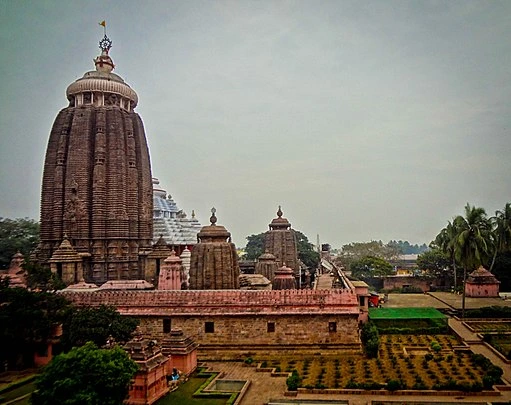
By air: Bhubaneswar, situated approximately 60 km away, has the nearest airport to Puri. It is well-connected to major cities across India. This includes Mumbai, Kolkata, Pune, Chennai, and Delhi, among others. Once you land in Bhubaneswar, you can conveniently book a taxi or board a bus for a pleasant two-hour journey to reach Puri. Consider booking an airport cab in Bhubaneswar to ensure a comfortable and hassle-free transfer to your accommodation.
By train: Puri boasts its dedicated railway station, providing easy access from various parts of India. You can find direct trains from Mumbai. Kolkata and New Delhi also have direct train connections. Other major cities offer convenient train routes to Puri, ensuring a seamless journey.
By road: If you prefer the scenic route and enjoy road trips, you have the option to reach Puri by road from different parts of India. Buses are available from Bhubaneswar and Cuttack to Puri, or you can choose to drive your vehicle. However, to escape the challenges of public transportation and ensure a stress-free experience, book a comfortable cab from Bhubaneswar to Puri. With a knowledgeable local driver behind the wheel, you can rest assured that your journey will be smooth and enjoyable, allowing you to fully savour the beauty of the surroundings.
Helpful tips for Rath Yatra in Jagannath Puri: Do’s and don’ts
Follow these tips to have a safe and joyous Rath Yatra celebration in Jagannath Puri.
Do’s:
- Book a hotel close to the temple to minimize internal travel time in Puri.
- Get to the venue before 6-7 am to get a good viewing spot.
Don’ts:
- If you are in a group, avoid ordering food from a specific hotel or arranging temple Prasad for the entire group. Pay individually at each eating place.
- Local thieves can easily target bead bags or money belts, so it is advisable to avoid carrying money and mobile in them.
- Avoid travelling alone in a huge crowd to ensure your safety.
Through the timeless tradition of Rath Yatra, I witnessed the power of devotion transcending boundaries. It was a celebration of spirituality and unity, an embodiment of faith in motion. It is a testament to the enduring power of faith and the beauty of human connection. To truly immerse yourself in this cultural beauty, I highly recommend downloading the Savaari app. With Savaari, you can travel on the journey with ease and convenience, ensuring a safe and comfortable experience. What sets Savaari apart is the option to travel with a chauffeur who possesses local expertise. This not only guarantees a smooth journey but also provides you with valuable insights into the local folklore, rituals, and the deep significance of the Puri Rath Yatra.
So, embrace the transformative power of Rath Yatra and embark on this extraordinary journey. Let Savaari be your trusted companion, guiding you through the vibrant streets and immersing you in the captivating aura of this ancient celebration. Rath Yatra awaits, ready to ignite your spirit and leave an indelible mark on your soul.
Last Updated on July 11, 2024 by Shabari Shankar
